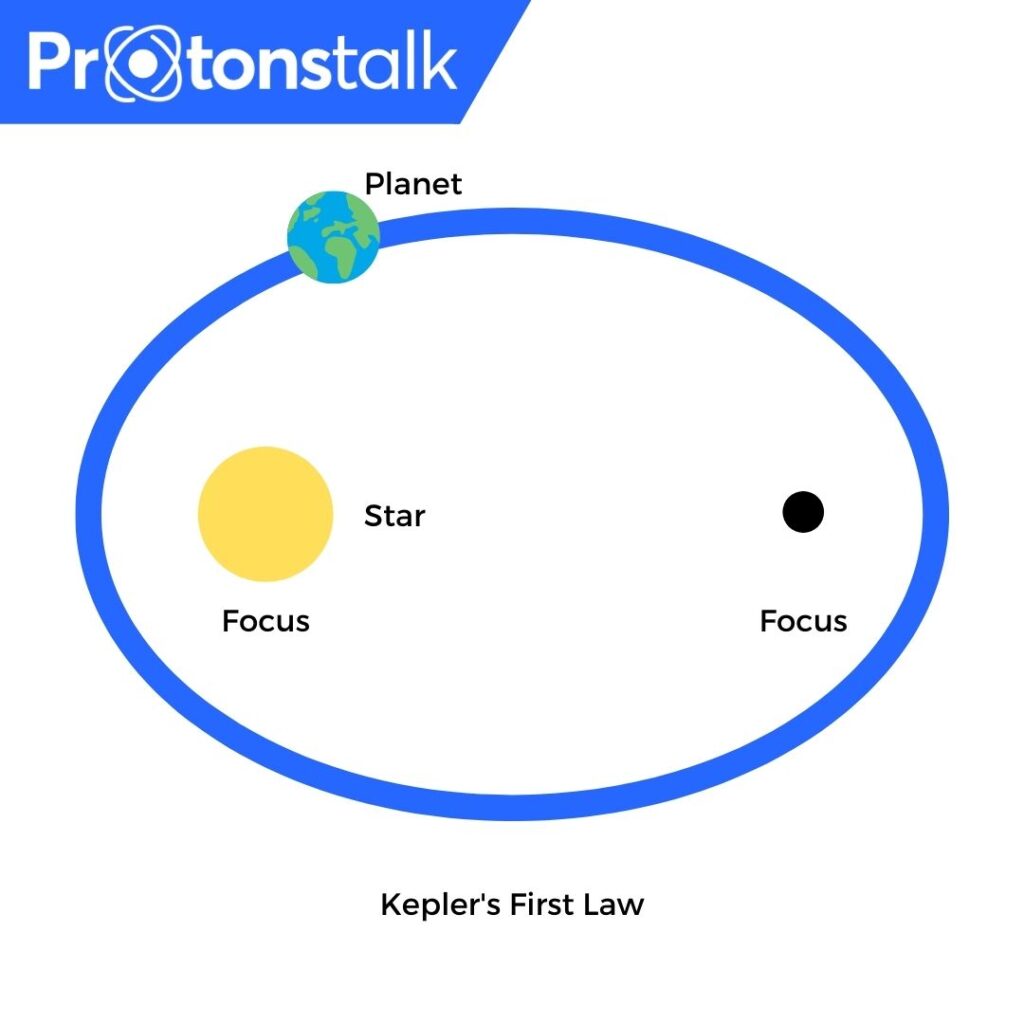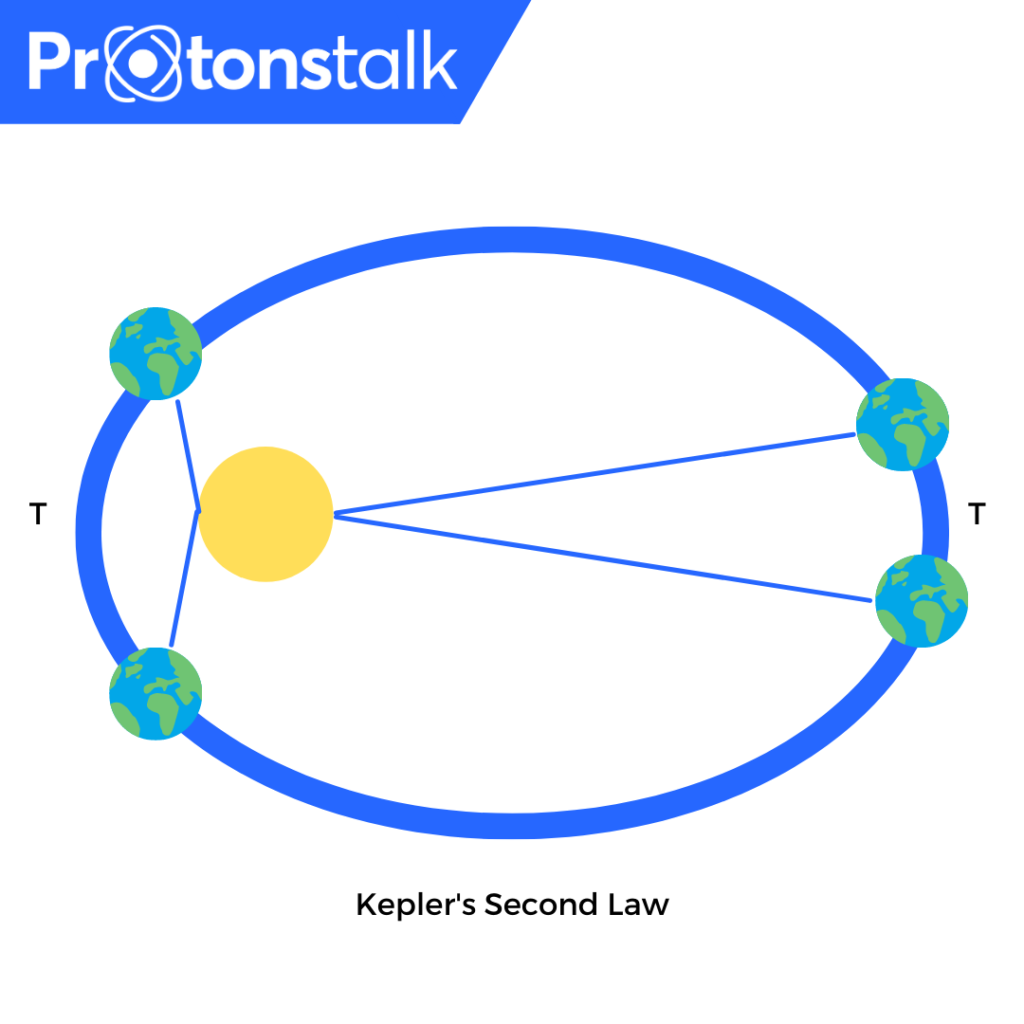Kepler’s laws of planetary motion, are the laws that describe the motions of the planets in the solar system. These laws were derived by Johannes Kepler, a German astronomer, in the early 1600s. And hence these laws are named after him.
These laws are mainly used in Astronomy and Classical Physics.
Index
History
Kepler was able to summarize the carefully collected data of his mentor –Tycho Brahe– a Danish astronomer. Kepler published his first two laws in 1609, in the book Astronomia Nova. The third law was published nearly a decade later, in 1619, in the book Harmonices Mundi.
Kepler’s First Law
The path of the planets about the sun is elliptical, with the sun at one of the two foci. This is known as the law of Ellipses.

Kepler’s Second Law
An imaginary line drawn from the center of the sun to the center of the planet will sweep out equal areas in equal intervals of time. This is known as the Law of Equal areas.

Kepler’s third law
The square of a planet’s orbital period is proportional to the cube of the length of the semi-major axis of its orbit( i.e T2 α R3 ). This is known as the Law of Harmonies.
Which means..
(T1/T2)2 = (R1/R2)3
Applications
- They have been used to find the orbits of many objects such as Comets and Asteroids.
- These laws played a key role in the discovery of dark matter in the Milky Way.
- Although Kepler originally developed his laws in the context of planetary orbits, the results hold valid for any system with radial force obeying the inverse square laws
- The 1rst and the 2nd laws help us determine the path of the objects in space.
- Whereas the third law is used to determine the period and radius of the elliptical paths.
Example Problems
Question 1: A satellite on a circular orbit of radius R around Mars has an orbital period of 10.0 hr. A second satellite is to be placed in a circular orbit so that its orbital period will be 5.00 hr. The radius of the orbit of the second satellite should be closest to?
Ans: For Satellite-1 with circular orbit about a planet:
The radius of the orbit: R
Time, T1 = 10.0 hr
For Satellite-2 with circular orbit about the same planet:
The radius of the orbit: R’ (To be found)
Time, T2 = 5.00 hr
T22 ∕ T12 = R’ 3 / R3
(5.00 hr)2 ∕ ( 10.0 hr)2 = R’ 3 / R3
We get R’ = 0.630 × R
Question 2: A satellite A of mass M is at a distance of r from the center of the earth. Another satellite B of mass 2m is at a distance of 2r from the earth’s center. Their time periods are in the ratio of ..?
Ans: Here we should note that Mass of the satellite does not affect the time period.
We know that
(T1/T2)2 = (R1/R2)3
R1=r;
R2=2r;
So we get the ratio of the time period = 1/2√ 2 sec
FAQs
It is considered as the distance between the center of the Sun and the center of the Earth.
It deals with speed/area the planet travels.
Law of Ellipses.
So, that is all about Kepler’s laws of planetary motion.

Hi, I just read texts on your website and I became interested in the topic. I like your article and I am thinking whether I could use your words in my work? Would it be probable? If yes, please contact with me. Thank you.